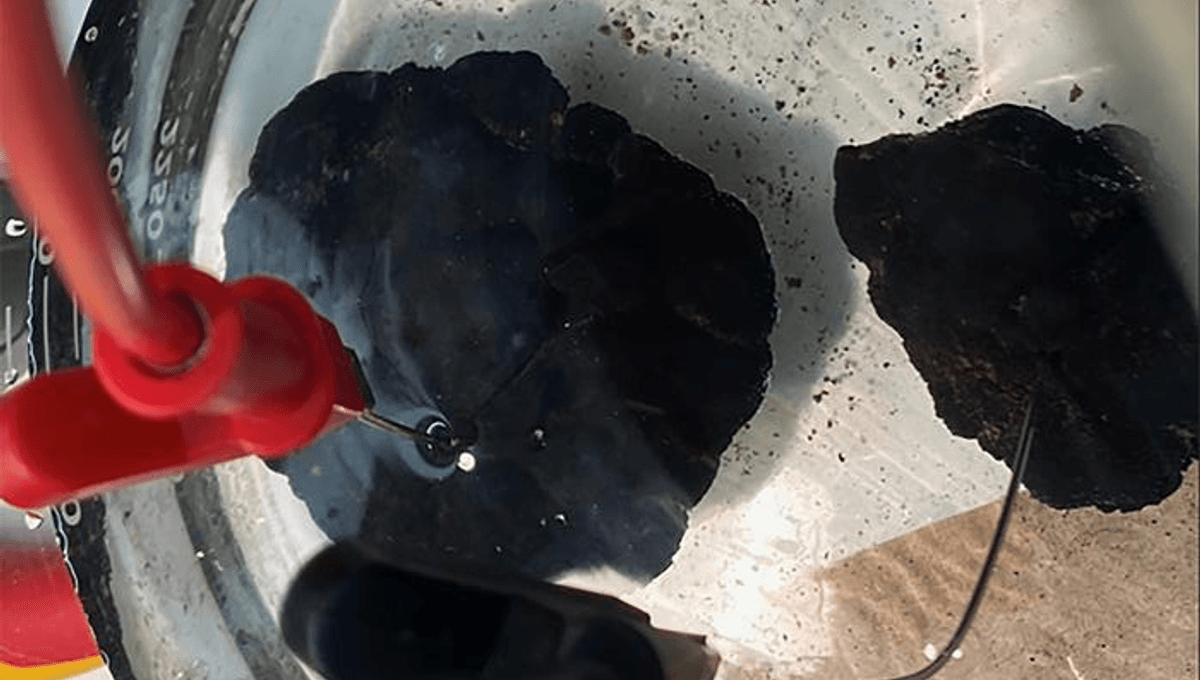
The discovery of a source of deep-sea oxygen has shocked marine researchers, and could force a radical rethink across several areas of science, including the quest for extraterrestrial life. The oxygen is produced not by photosynthesis, but by minerals on the ocean floor.
High school science classes teach that we get our oxygen from the photosynthesis of plants, particularly tropical rainforests. Scientists have known for decades that this is only half true – plants do indeed produce a great deal of the oxygen we breathe, but so do phytoplankton in oceans and lakes.
In both cases, however, the basic process is the same – living organisms harness sunlight to turn carbon dioxide and water into the molecules they need and produce oxygen as a byproduct. The existence of this oxygen allows the Earth to support animals, including ourselves.
Without light to power photosynthesis, oxygen is sparse in the deep ocean; much life depends on the tiny amounts available. It was thought the only oxygen present below a few hundred meters beneath the surface was a result of ocean mixing, making the possibility of mixing rates falling a dire threat.
Yet when Professor Andrew Sweetman of the Scottish Association for Marine Science sampled part of the Clarion-Clipperton Zone, a deep sea Pacific mountain range, he found something unexpected. Chambers placed on the seabed in waters more than 4,000 meters (13,000 feet) deep showed a rise in oxygen levels over a period of days.
“When we first got this data, we thought the sensors were faulty because every study ever done in the deep sea has only seen oxygen being consumed rather than produced,” Sweetman said in a statement. “We would come home and recalibrate the sensors, but, over the course of 10 years, these strange oxygen readings kept showing up.” The team only believed their results after using a different method of oxygen detection.
Sweetman and colleagues termed this “dark oxygen”, both because they didn’t know the source, and its production in the absence of light. The significance of such a discovery is hard to overstate.
“For aerobic life to begin on the planet, there had to be oxygen, and our understanding has been that Earth’s oxygen supply began with photosynthetic organisms,” Sweetman said. “But we now know that there is oxygen produced in the deep sea, where there is no light. I think we, therefore, need to revisit questions like: Where could aerobic life have begun?”
The role such dark oxygen plays in evolution might be the biggest question such a finding poses, but the more immediate challenge was to work out where the oxygen was coming from. Having failed to find a biological explanation, the team suspected polymetallic nodules, deposits made of a mix of minerals that have had mining companies drooling for decades, might be responsible.
After consulting Professor Franz Geiger of Northwestern University, who had previously demonstrated rust and seawater can combine to make electricity, the team concluded metals on the seafloor were performing natural electrolysis, splitting water into oxygen and hydrogen.
Nodules were collected and brought to Geiger’s lab, where he found some were producing 0.95 volts of electric charge. In the right orientation, multiple nodules can combine to produce higher voltages, potentially exceeding the approximately 1.5-volt threshold needed to split seawater.
“It appears that we discovered a natural ‘geobattery,’” Geiger said. “These geobatteries are the basis for a possible explanation of the ocean’s dark oxygen production.”
The removal of sediments from nearby nodule surfaces when the explorer touched down may have set off a surge in activity. This would explain why the oxygen levels rose quickly, before trailing off.
The composition of polymetallic nodules varies, but the ones apparently responsible could be some of the most valuable. “The polymetallic nodules that produce this oxygen contain metals such as cobalt, nickel, copper, lithium and manganese — which are all critical elements used in batteries,” Geiger added. This is where the exciting scientific discovery runs into some harsh realities.
Deep sea mining has been discussed for a long time, but has usually been too expensive for widespread use. Now, however, as technology brings down the costs, and prices for many metals shoot up, that’s expected to change. The team doesn’t know what the consequences would be for deep-sea life if this source of oxygen is removed, but Geiger sees a warning in one of the rare cases where metals were extracted from the ocean floor.
“In 2016 and 2017, marine biologists visited sites that were mined in the 1980s and found not even bacteria had recovered in mined areas,” Geiger said. “In unmined regions, however, marine life flourished. Why such ‘dead zones’ persist for decades is still unknown. However, this puts a major asterisk onto strategies for sea-floor mining as ocean-floor faunal diversity in nodule-rich areas is higher than in the most diverse tropical rainforests.”
The study is published in Nature Geoscience.
Source Link: Natural Batteries On The Deep Ocean Floor Appear To Be Making “Dark Oxygen”